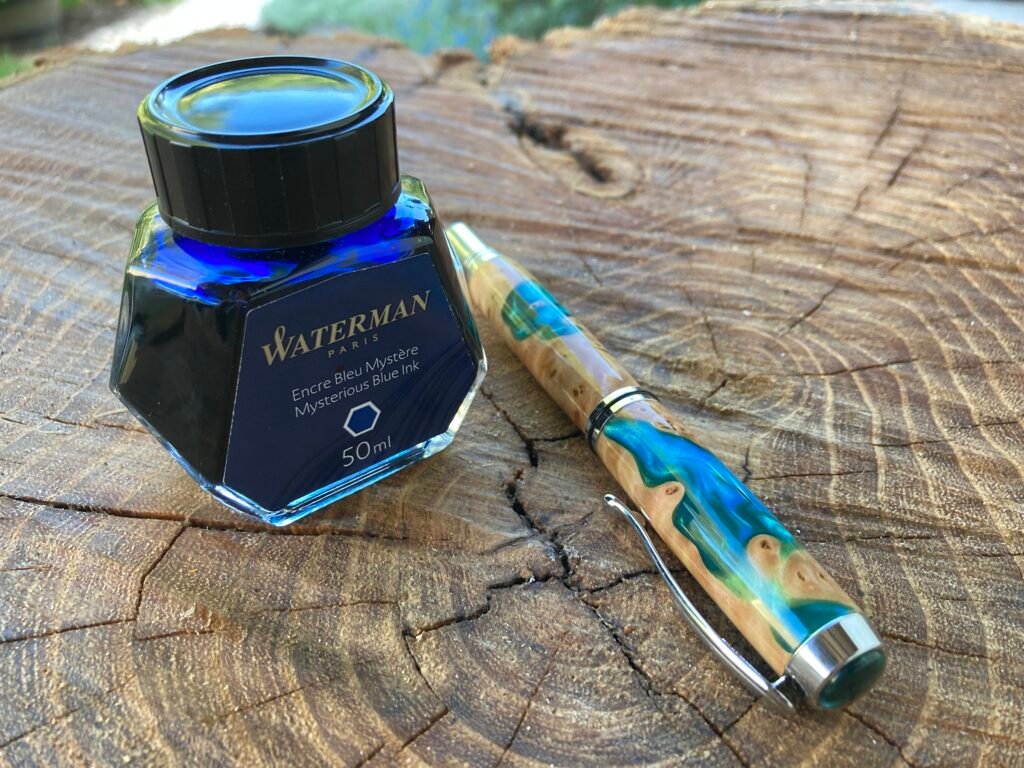You may wonder: What’s the difference between a ballpoint, a rollerball and a fountain pen? What are the advantages or disadvantages of each? In this article I’ll compare the different ink pens and help clear it all up for you.

Ballpoint Pens
These are the pens you’re most familiar with and have used a thousand times. But what you might not know is that the ink in a ballpoint pen is oil-based. The single greatest advantage is that it doesn’t dry out, and doesn’t need to be capped. You can find an old ballpoint bank pen under the seat of your car and chances are it’ll resume writing after a couple of scribbles. The other advantage is that the ink lasts a long time. You could fill a whole journal with a single pen.
The disadvantages are that it skips occasionally and that the tip can get gloppy. Of course they do make better quality oil-based inks than what comes in your basic Bic pen, which is what I use in my pens. When it’s time for a refill, I recommend the Schmidt EasyFlow 9000. You’ll notice the difference when you write!
Rollerball Pens
Rollerball pens use water-based ink. Actually, it’s often water and denatured alcohol based, and the alcohol helps the ink to dry quicker once it hits the paper. Rollerball pens write crisp bold lines that don’t skip. The thinner ink flows out easily with very little pressure on the page, which reduces hand fatigue.
The largest disadvantage of a rollerball is that the ink does evaporate and so the pen needs to be kept capped when not in use. A small price to pay for such a lovely writing piece. A secondary disadvantage is that the ink takes a moment to dry on the page, and so left-handed people may find the ink smears if they write too quickly.
I recommend the Schmidt 5888 Rollerball Refill for my rollerball pens.


Fountain Pens
The elegant and sophisticated fountain pen is the pinnacle of writing pieces. They’ve only been around since the 1800s but feel very old fashioned to today’s iPhone generation. A fountain pen uses the same water-based ink that Rollerballs use but is delivered to the paper through a slit in the pen’s nib. The ink flows out with a very light touch, and the fountain pen user has a tactile connection to the texture of the paper because there is not a ball rolling along the surface.
A huge advantage of the fountain pen is the ability to use bottled fountain pen ink. There are thousands of colors available commercially and the quality of bottled inks is much higher than cartridges or refills.
With a nibbed pen, there is also some light periodic maintenance that the pen’s owner needs to do. This is usually just unscrewing the nib and soaking it in warm water, but a carefully used fountain pen should last for years and years.


